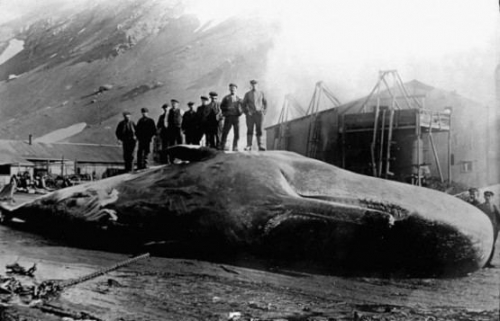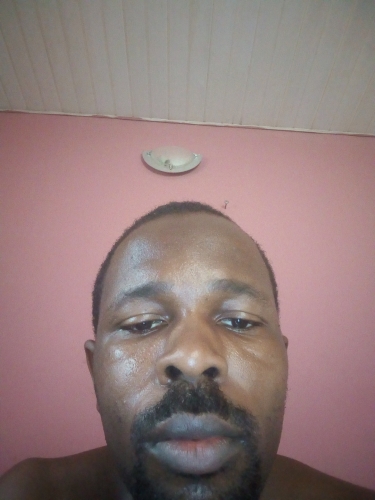News And PoliticsCommunications And EntertainmentSports And FitnessStories And PoemsHealth And LifestyleArts And EducationReligion And PrinciplesBusiness And MoneyRelationship And MarriageScience And TechnologyMotivationalsUSMLE And MedicalsOthersAgriculturePersonal Care And BeautyIT And Computer ScienceFamily And HolidaysVehicles And MobilityEngineeringWorldnews
profile/93871595323739410.jpg
Emmaximus123

Meet The Modern Day Jonah Who Survived After Been Swallowed By A Sperm Whale
~3.2 mins read
We might have wondered; what are the chances of survival when swallowed by a huge whale in the sea or ocean as the case may be. Well, you might have thought that could have never happened as you do not believe in all these stories told by the Bible and the Quran; but what if we told you that something of this nature happened not too long ago(its actually about 200 years ago) In this new article by factboyz, we bring to you the man who we can refer to as the modern day Jonah. For those of us who are conversant with bible stories, we must have read how Jonah was swallowed by a large whale where he spent three days at its belly. Today’s Jonah had a different name James Bartley.
It’s said in 1891 he was indeed swallowed by a whale, but the whale died, and the man was found alive inside its stomach. This unbelievable story was widely reported in the British and American press
One British media outlet ran the headline, “Rescue of a Modern Jonah†while many America newspapers also ran the story.
Bartley, was a sailor on the British ship, Star of the East. During their long trip the crew saw a large whale swimming off the coast of the Falkland Islands in South America. The lookout spotted a huge sperm whale half a mile off the port bow and gave the cry ‘There she blows!’ The ship’s sails were slackened and soon her small boats were lowered. A deadly race began between the Star of the East and the immense whale.
They dropped a couple of boats and were adequately armed with harpoons ready to hunt down the beast. Unfortunately, the little boats were no match for the massive whale and it tipped them, although it had been hit with two harpoons and was mortally injured, already at the mercy of the overzealous sailors. Following the boats misfortune, most crew members were rescued, with one drowned and another who went missing, and presumed drowned. The missing one was our dear modern-day Jonah Mr Bartley.
Within a few hours the now dead whale was pulled alongside the whaling ship. Soon the crew began cutting it up and retrieving the fat. The quite tiresome job took up the rest of the day, and a good part of the night, and then work resumed about noon the next day. However, it was on the second day that something strange was discovered; as the stomach was freed and torn apart, it was brought to the deck for rendering, and something bulging was noticed with the sign of life! When the stomach was fully cut open, they discovered the missing sailor James Bartley who was curled up and shockingly alive, though just barely as this was thirty-six hours after he went missing.
He was laid down on the deck and splashed with sea water to reinstate his consciousness. The whale’s gastric juices had bleached Bartley’s face and wrinkled them. It is reported that he was kept in the captain’s cabin for two weeks where he recovered fully.
According to Bartley, he remembered being thrown from the boat and into the water, where he suddenly felt darkness and found himself slipping along a smooth passage that seemed to move and carry him down.
He continued by saying he came to an area with more room in it, and was able to reach around, feeling the walls and noticing its slimy nature. He quickly realized he had been swallowed. Air was sure enough for him, but the stomach was terribly hot and this drained his energy; sure enough to make him pass out. The next thing he was very sure of was waking in the captain’s cabin.
This story is hard to believe as it seems to be straight out of a Children’s fiction storybook but He’d apparently survived 36 hours inside the whale and this is how the newspapers reported it.
For close to 16 years, no one challenged this story and it was considered proof for the biblical story of Jonah; however it is reported that the captain’s wife on November 27, 1906, wrote to A.Lukyn Williams (who was on a quest to make some basic inquiries with the hope of getting a statement from the captain of the Star of the East concerning the incident) from Yarmouth (Nova Scotia):
profile/93871595323739410.jpg
Emmaximus123
1,100-Year-Old Gold Coins Found At Dig Site In Israel
~1.3 mins read
Youths volunteering at an archaeological dig in central Israel have found 425 gold coins that had lain buried in a clay jar for 1,100 years.
Most of the money dates back to the early Islamic period, when the region was part of the Abbasid caliphate.
The coins weigh 845g (30oz) and would have been worth a huge sum when they were buried enough to buy a luxurious home in one of the caliphate's cities.
Who owned the cache, and why they never returned to collect it, is a mystery.
Most of the money dates back to the early Islamic period, when the region was part of the Abbasid caliphate.
The coins weigh 845g (30oz) and would have been worth a huge sum when they were buried enough to buy a luxurious home in one of the caliphate's cities.
Who owned the cache, and why they never returned to collect it, is a mystery.

"The person who buried this treasure 1,100 years ago must have expected to retrieve it, and even secured the vessel with a nail so that it would not move," the directors of the excavation, Liat Nadav-Ziv and Elie Haddad of the Israel Antiquities Authority, said in a statement.
They added: "Finding gold coins, certainly in such a considerable quantity, is extremely rare. We almost never find them in archaeological excavations, given that gold has always been extremely valuable, melted down and reused from generation to generation."
The youth who discovered the hoard, Oz Cohen, said: "It was amazing. I dug in the ground and when I excavated the soil, saw what looked like very thin leaves. When I looked again I saw these were gold coins."
Robert Kool, a coin expert, said the cache consisted of full gold dinars but also 270 small gold cuttings - pieces of dinars cut to serve as "small change".
He added that one of the cuttings was a fragment of a gold solidus of the Byzantine Emperor Theophilos minted in Constantinople, which was rare material evidence of the continuous connections between the two rival empires during this period.
Advertisement

Link socials
Matches
Loading...
